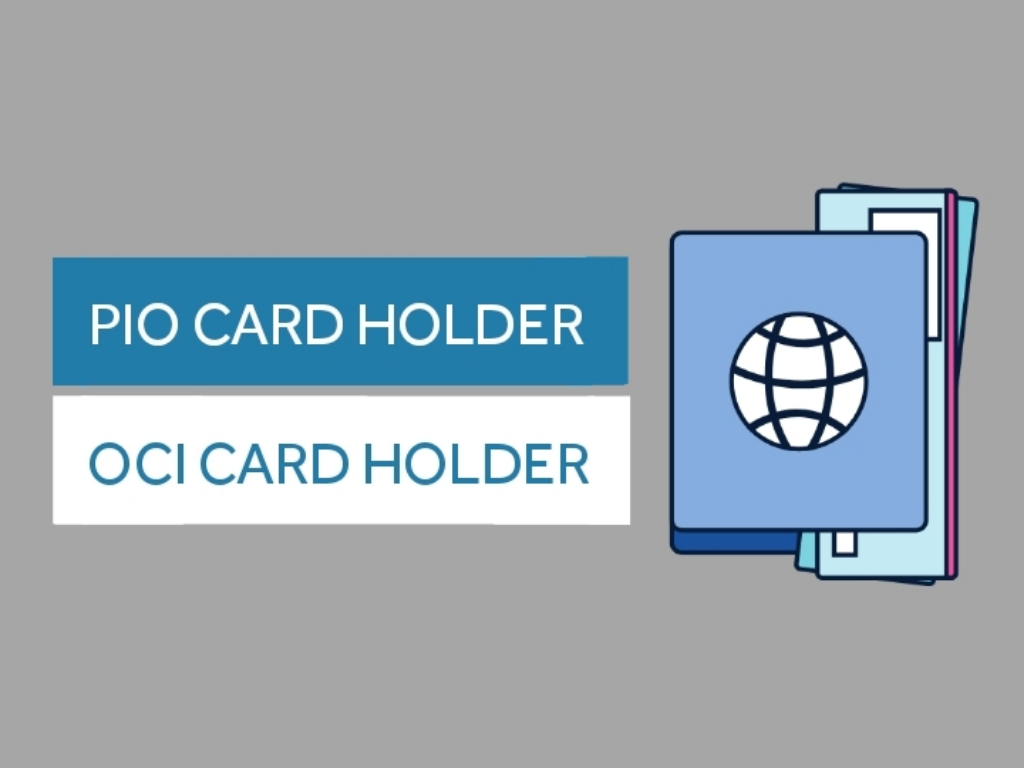Indian’s feel moving out of India as a lifetime achievement and as a moment of pride. They work very hard to fulfill their dreams. Indian’s who leave India don’t want to lose their relations, connections for this they very often visit India every other year to meet their family, friends, etc.
There are certain policies which are framed by the Government Of India to facilitate the Indians who are living in other countries to easily visit India. For this purposes, The GOI categorized Indians who are living in foreign countries as NRI, OCI, and PIO. The Government Of India (GOI) issues PIO cards and OCI cards for the Indians who are living abroad to help them to stay connected with India very often.
Non-Resident Indian (NRI)
A Non-Resident Indian (NRI) is a citizen of India who holds an Indian passport and has temporarily emigrated to another country for employment, education or other purposes.
Person of Indian Origin (PIO)
Person of Indian Origin (PIO) is a person of Indian origin or have ancestors from India but who is not a citizen of India and is the citizen of another country. A PIO might have been a citizen of India and subsequently taken the citizenship of another country, or have ancestors born in India or other states.
Overseas Citizen of India (OCI)
Overseas Citizen of India (OCI) is a scheme that was introduced in response to demands for dual citizenship by the Indian people who are living in abroad, particularly in developed countries. OCIs are non-Indian citizens who have a lifetime visa to live and work in India with fewer restrictions.
DIFFERENCES
| PERSON OF INDIAN ORGIN | OVERSEES CITIZEN OF INDIA |
|---|---|
| PIO cards are issued to persons who are either citizens or citizens of another country but are of Indian origin, through their parents. | OCI cards are issued to persons who have taken citizenship in other countries, apart from India, but have Indian origin roots. |
| Indian Visa | |
| Person of Indian Origin (PIO) card holder doesn't need an Indian visa to visit India for 15 years. | Overseas Citizen of India (OCI) card holder has a lifetime visa offered by the Indian government to visit India. |
| Exempted From | |
| The PIO card holders were exempted from reporting at the Foreigner Regional Registration Office (FRRO) during the first 180 days of stay in India. The person should register with FRRO within 30 days after completion of 180 days. | The OCI card holders never have to register with Foreigner Regional Registration Office (FRRO), no matter how long the duration of stay is. |
| Stay Requirements | |
| The PIO card holder has to reside in India for a minimum of 7 years to apply for Indian Citizenship. | The OCI card holder is permitted to apply for Indian Citizenship only after completion of 5 years after the issue of OCI card and he also have to reside in India for minimum of 1 year before applying. |
SIMILARITIES
Both PIO and OCI cards exhibit so many similarities and some of them are as follows
⦿ Provided with separate lines at immigration counters at all international airports in India to facilitate easy verification and stamping of passport.
⦿ Enjoy same rights as NRI’s in matters relating to property acquisition, buying and selling, except agricultural and plantation properties.
⦿ Don’t require study visa to study in India and also don’t require employment visa to acquire employment in India.
⦿ Enjoy same financial, economical, and educational reservations benefits as NRI’s.
⦿ Don’t have any voting rights and are not eligible to contest in elections in India.
⦿ Don’t have the eligibility to get government jobs as Indian citizens.
CONCLUSION
Recently, Indian Prime Minister Shri Narendra Modi at the event “Pravasi Bharatiya Diwas” requested the Indian people who are living in abroad to switch from their PIO cards to OCI cards before June-30-2017 because OCI cards carry more benefits than the PIO cards.



